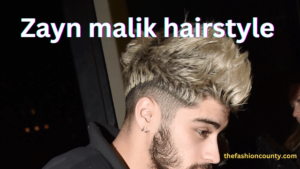Henna, Natural Hair Dye

We teach you how to use henna, which is a natural hair dye that, in addition to giving color, strengthens, nourishes and defends against fungi and bacteria. An excellent alternative to industrial dyes, one of the most toxic products out there. Henna covers gray hair, fights dandruff, stops hair loss …
Henna is a natural dye that comes from the leaves of a bush called Lawsonia Inermis. It has a brown or reddish color and is used very often in countries such as India, Pakistan, Iran, the Middle East and also in Africa.
Throughout the history of humanity it has been used to dye skin, hair , fabrics and also as an anti-fungal, preservative or mosquito repellent. It is a product whose applications in natural hair cosmetics will be very beneficial to us thanks to the many properties of this herb from Africa and Asia.
Choosing henna for hair?
Yes, henna for gray hair is synonymous with a tendency to natural, its effects have been widely demonstrated, becoming one of the products preferred by experts since it gives more color to your hair, deeply nourishes the scalp, improves its appearance and makes it stronger and more resistant. So what better way to cover your gray hair?
It should be noted that the appearance of gray hair is a natural biological process that all people go through. Being a transition of our body it is necessary to face it with solutions of natural origin to guarantee not only our health, but also that of our hair. It is here where henna takes center stage, since it not only nourishes the hair, but also fills the gray hair with color and does not mistreat the rest of the mane, which is still naturally pigmented.
Advantages of using Henna
Industrial dyes are one of the most toxic products that exist and, in fact, professional people who work daily with this type of substances have higher rates of bladder cancer . In addition, industrial dyes make hair suffer and are very irritating to the skin, so as a consequence of their long-term use, we will observe the consequences of hair loss and we may end up suffering from some type of severe allergy .
Henna , by contrast, is a completely harmless natural dye that covers gray hair and can give us different shades when combined with other herbs.
Among its many advantages , the following stand out:
-
- Protects our hair from weather excesses (sun, air, wind, etc).
- It strengthens it thanks to its contribution of nutrients .
- It helps control the production of fat on the scalp, so hair that has this problem will greatly benefit from its use.
- It is used to combat dandruff .
- Adds volume to hair.
- Pregnant women can use it without any risk.
- Unlike chemical dyes, since it is not dangerous it can be used frequently.
- It has chemical qualities in its natural composition similar and suitable for human hair.
- Repair damaged tips
- The henna is an excellent natural treatment to slow the fall of the hair.
Using Henna for Gray Hair (Process)
- Mix a quarter of the contents of the envelope of Indian henna for gray hair in a container with hot water and stir until you have a homogeneous and thick paste.
- Wear gloves and divide your hair into small sections.
- Select a section and apply the paste from the roots to the ends. Repeat the process with the others.
- After making sure you have covered the gray hair well, leave the paste for about an hour on your hair.
- After this time, rinse with plenty of water. Do not use shampoo with salt and preferably remove with Henna Shampoo, in order to maintain the color of the applied henna.
Considerations in the use of Henna
Despite all these advantages, before using henna as a hair dye , there are some considerations to keep in mind. The h enna is not a dye to use and has its own characteristics :
-
- First of all, it does not offer you the full range of colors that the chemical industry offers us. Henna offers browns, mahogany, reddish, and orange.
- It does not stain from dark to light , that is, it does not discolor.
- It is a semi-permanent dye that loses a certain color with the washes, but lasts between two and four months.
- When there are few gray hairs, it offers reddish reflections or permanent mahogany that favor and are enhanced by sunlight.
- When we have gray hair in abundance, we will never know with certainty what color our hair will be. Depending on our state, nutrients, hormones, etc., the color may change from one session to another . It always remains, yes, in orange tones.
- Pay attention to the type of henna you buy, since henna is often mixed with chemical ingredients to make its application more effective. The authentic henna has a greenish color , never black. The safest place to buy authentic henna is at an Indian or Arabic store.
- Like other dyes, as your natural hair grows, the color will show through the roots and you will have to dye it again.
- Do not use henna when your hair is already dyed or bleached. The problem is not that it is dangerous, but the resulting color can be a real surprise.
How to apply Henna
Applying henna as a natural dye does not carry any mystery and is done in the same way that you would apply any other dye. These are the steps you have to follow:
-
- To make the mixture, use rubber gloves , since henna stains the skin very easily and if you do not use them, your hands will turn brown.
- Boil water in a saucepan.
- Add henna powder in a plastic container (not metal, as it can influence the color) and mix it with the water you have boiled.
- Stir well with a wooden utensil until you get a creamy consistency that is neither too thick nor too watery.
- Another option is to add an organic natural yogurt to the paste , which will help hydrate the hair and make it softer.
- Without washing the hair, and dry , apply the mixture with a brush dividing the hair into locks, in the same way that you would with an industrial dye.
- When you have finished applying it, cover your hair with a towel.
- Let it sit for at least three hours (the longer you leave it, the darker the resulting color will be).
Rinse all the hair with plenty of water and then wash it with the most natural and ecological shampoo possible.
As you can see, it is not a complicated procedure, much less. Henna dye is a natural alternative that, far from damaging the hair, keeps it cared for and protected , also strengthening the most damaged areas . If you want more information visit our article Natural Hair Care.






